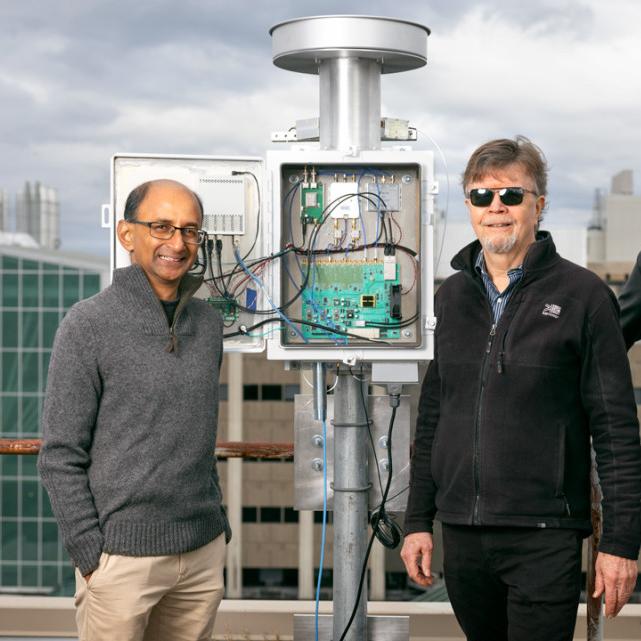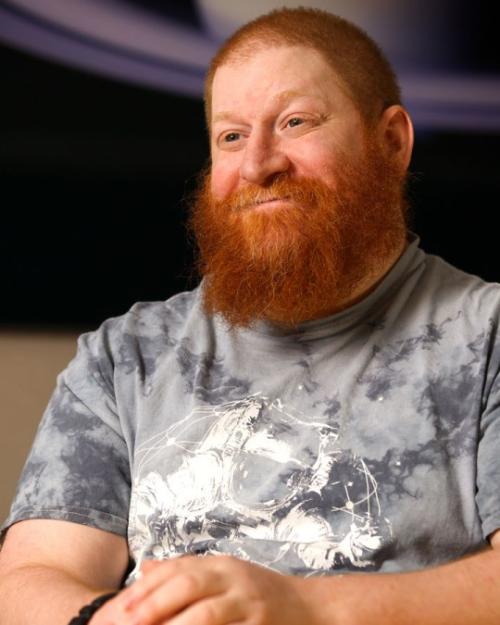When Jake Turner was a kid in rural Colorado, he had pictures of all the Apollo lunar missions thumbtacked to his bedroom walls, along with Neil Armstrong’s words, “One small step for man, one giant leap for mankind.”
“I would look at those every day before I went to bed, but I don’t think I ever imagined I would be working on a NASA mission going to the moon,” said Turner, NASA Hubble/Sagan Postdoctoral Fellow in astronomy in the College of Arts and Sciences (A&S) and part of the Carl Sagan Institute.
Now NASA is going back to the moon for the first time in 51 years – and Turner, an expert in the magnetic fields of exoplanets, is playing a key role: He’s a science adviser on NASA’s first radio telescope ever to land on the moon. The telescope will lay a foundation for detecting habitable planets in our solar system by observing Earth in the radio as if it’s an exoplanet.
NASA has announced a launch window opening Feb. 14 from NASA’s Kennedy Space Center in Florida, contracting with Intuitive Machines of Houston to carry science payloads to the moon.
The Intuitive Machines 1 (IM-1) lunar mission is one of nearly 100 scheduled through 2030 – part of a global race to the moon.
“I’m really glad to see this resurgence of people wanting to use the moon, not only to study but to use as a platform for other missions,” Turner said. “It’s a Goldilocks zone; it’s relatively easy for us humans to get there, compared to other places, and it does have some advantages. It has a solid surface for landings, and eventually people want to use it as a base for Mars and beyond.”
The moon is also “just right” for observing Earth in the radio, Turner said; it’s far enough away that we can see the entire planet as one signal, but close enough that almost no signal is lost, establishing a “ground truth” scientists can extrapolate to many light years away.
“I’m a little nervous,” Turner said. “This does set the foundation for a lot of the research I want to do in the next 10 to 20 years.”
Very, very far away
A planet’s magnetic field, which creates radio waves, reveals a lot about its interior structure and atmospheric dynamics – and might protect its atmosphere from being eroded away by the stellar wind from its host star, Turner said. All are clues to habitability. Larger planets, like Jupiter, emit higher radio frequencies while smaller ones, like Earth, emit lower radio frequencies.
Radio observations from the ground on Earth have revealed extensive information about our solar system’s gas giants, said Jonathan Lunine, the David C. Duncan Professor in the Physical Sciences and chair of astronomy (A&S). The Very Large Array in New Mexico, for example, has given insight into the chemical composition of Uranus and synchrotron radiation from Jupiter.
“Just from what we’ve learned about the atmospheres of the giant planets in our own solar system, and about magnetic fields, there are going to be some interesting things to learn about extra-solar planets, as well,” Lunine said.
The radio telescope experiment, one of six science payloads on IM-1, is called ROLSES (Radio wave Observations at the Lunar Surface of the photo-Electron Sheath). Made of four antennas that each extend to eight feet long and are packed into an eight-inch canister for launch, the instrument will study the “photoelectron sheath,” a layer of charged particles just above the moon that could give the lunar surface a small electrical charge. It will also observe radio waves emanating from around Earth and Jupiter.
The best way to understand the magnetic fields of exoplanets is by observing their radio emissions, he said: “The radio waves that we’re detecting with ROLSES you can’t hear with your ears.” So all the data they’re collecting will be converted into information they can assess visually.
There are challenges when it comes to observing exoplanets from Earth in the radio frequencies.
First, there’s interference. We can’t observe Earth-sized planets from the ground because our own atmosphere blocks signals in the same range, Turner said. On top of that, human-made radio chatter adds confusing noise to observations, he added.
Second, instrumentation needs to catch up. So far, radio telescopes have detected radio signals from an exoplanet system only once – and Turner was the one to do it. In a 2021 study, he and colleagues detected radio signals from the Tau Boötes system using the Low-Frequency Array (LOFAR), a large radio telescope based in the Netherlands. Turner is also a key science member studying dozens of gas giant exoplanets, including following up the Tau Boötes signal, in the radio with NenuFAR, a newly commissioned radio telescope array in France. In fact, Turner recently led the first exoplanet radio study with NenuFAR. The exoplanets are predicted to have magnetic fields, so they must be emitting radio signals.
“The challenge is having a sensitive enough telescope to detect them because these planets are very, very far away,” Lunine said. “There’s no question we will learn things from radio measurements of extra-solar planets.”
The future of radio astronomy
From its vantage point on the moon, ROLSES will be a step toward that future day when radio astronomy, which has been used to study all kinds of astronomical sources both within our solar system and far beyond, is a robust method for observing exoplanets – particularly habitable ones.
“Cornell has been a real leader in radio astronomy thanks to its construction of the Arecibo Observatory in the 1960s. It’s one of the institutions recognized with having developed the field,” Lunine said. “This is a real opportunity for Cornell to help take the next step in radio astronomy.”
Turner is a science adviser on another lunar radio telescope scheduled to land on the far side of the moon in 2026, the Lunar Surface Electromagnetics Experiment – Night (LuSEE-Night), a collaboration between NASA and the U.S. Department of Energy.
He’s also on the science team for FARSIDE (Farside Array for Radio Science Investigations of the Dark ages and Exoplanets), a radio telescope array that consists of hundreds of individual radio antennas, each one similar to ROLSES and LUSEE-Night. FARSIDE has been proposed to NASA to land on the far side of the moon, where it will be protected from radio interference from Earth. The team believes FARSIDE should be able to detect Earth-like planets 20 or 30 light years away, but they’ve never simulated that with real data. ROLSES’ observations of Earth will provide the simulation data they need, as well as building expertise toward studying Earth-like exoplanets 10 or 15 years from now.
“We’ll simulate Earth as an exoplanet so when we have FARSIDE we’ll have a good foundation of what to look for,” Turner said. The team also hopes to use ROLSES and LuSEE-Night observations of Earth, Jupiter and Saturn to train machine learning algorithms to detect exoplanets with similar characteristics.
Beyond the moon, Jake is a team member of the proposed Go-Low (Great Observatory for Long Wavelengths) mission, which complements FARSIDE. Consisting of thousands of tiny satellites, Go-Low will be able to study exoplanets of all sizes within 16 light years of Earth using radio frequencies. This distance includes the Earth-like planet Proxima Centauri b, which lies within its star’s habitable zone.
Turner said they are working toward collaboration in the coming decades between radio astronomy and the James Webb Space Telescope, which sees the infrared spectrum, in a synergy that will help direct resources toward the planets that are most habitable.
Until then, the ROLSES project shares a similar motivation to Carl Sagan’s famous work in 1977 to convince NASA to turn Voyager I around to take a photo of Earth. The result is one of space science’s most iconic images: the Pale Blue Dot, showing a tiny Earth in a sunbeam.
Similarly, ROLSES’s aim is to turn the viewfinder back toward Earth to lay the groundwork for seeing the rest of the cosmos.
“ROLSES won’t provide the same grandeur as Sagan’s Pale Blue Dot – that’s a lot to live up to. But it’s in that spirit,” Turner said. “We’re observing Earth as we would an exoplanet. We’re understanding our place in the universe and using that to try to understand other planets as well.”






